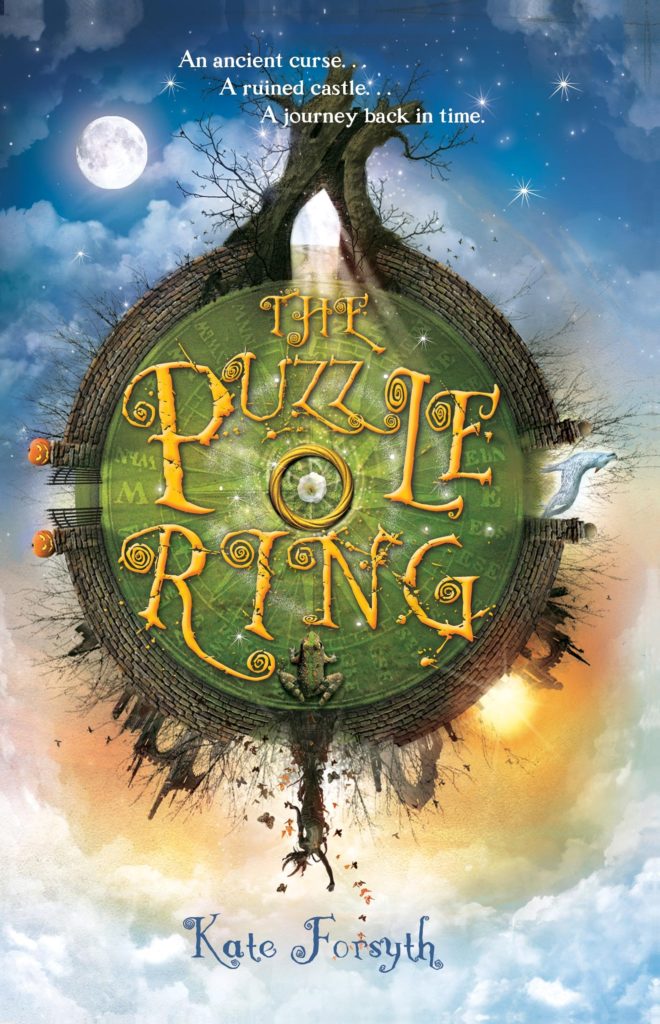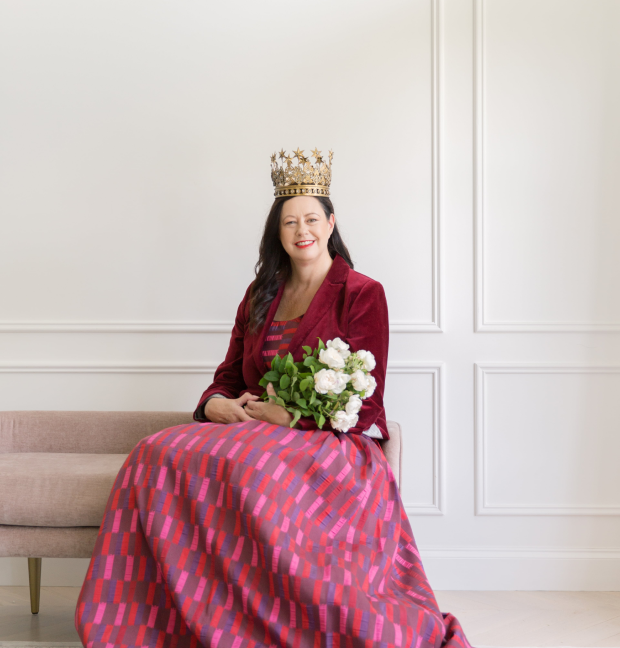
My novel The Puzzle Ring was partly inspired by my lifelong fascination with Mary Queen of Scots. My grandmother told me many stories about her, including the story of the bloodstain on her bedroom floor that no amount of scrubbing will wash away ...
Mary, Queen of Scots, was one of the most intriguing and controversial monarchs of the 16th century. At one time, she claimed the crowns of four countries - Scotland, France, England and Ireland – yet it all ended for her on the executioner’s block at Fotheringay, when her head was chopped off on the orders of her own cousin, Elizabeth I of England.
Born on 8th December 1542, she was the only child of King James V of Scotland and his French wife, Mary of Guise. Her father died when she was only six days old, and almost immediately people began fighting over who would control her. Her great-uncle, King Henry VIII of England, wanted her to marry his frail young son, Edward, and when Mary’s mother refused, invaded Scotland in a series of attacks called ‘the rough wooing.’
Eventually, Mary’s mother sent her to France to marry the French king’s three-year old son, the Dauphin François. She was five years old. Queen Mary spent the next thirteen years at the French court, accompanied by her own court consisting of the “four Marys” - four little girls her own age, all named Mary, the daughters of the noblest families in Scotland.
On 24 April 1558, at the age of fifteen, Mary married François, and when his father the king died a year later, she became the Queen of France.
She had already laid claim to the thrones of England and Ireland after the death of her cousin, Mary I of England, even though Henry VIII had another daughter, Elizabeth. This is because Mary, Queen of Scots, was Catholic, and in the eyes of many Catholics, Elizabeth was illegitimate, because her father had married her mother while his first wife was still alive. Claiming the throne of England was a big mistake on the part of Mary, Queen of Scots, because her Protestant cousin Elizabeth I of England never forgave her.
François died on 5 December 1560. Mary went from being the Queen of France to being a hated and ignored daughter-in-law to Catherine de Medici, the new Regent of France, who enraged her by recognising Elizabeth I as Queen of England. Aged eighteen, Mary returned, humiliated, to Scotland on 19 August 1561.
Scotland was now devoutly Protestant, and regarded Mary with suspicion, the flames being fanned by the radical reformer John Knox. He condemned Mary for dancing, playing music, dressing too frivolously, speaking French, and for her insistence on worshipping as a Catholic.
In July 1565, Mary married Henry Stuart, Lord Darnley, her first cousin. She pleased no-one with this marriage and enraged many. Darnley was one of the hated English, he was a rake and a gamester, and he was too close to the English throne for Elizabeth’s liking.
In March 1566, Darnley and his friends murdered Mary’s Italian secretary David Rizzio right in front of her. Darnley’s motivation seem to have been jealousy, racism, and the hope that Mary and her unborn child would also be killed and he could seize the throne and rule in Mary’s place. Rizzio’s blood splattered on to the floor of her bedroom, and even now – more than 450 years later – you can still see the stain there.

Mary persuaded Darnley to let her escape, but their marriage would never recover. Their son, James (to be James VI of Scotland and James I of England) was born a scant six weeks later.
On Sunday, 9th February 1657 – almost one year later - Holyrood Palace was filled with music and dancing and laughter, as Mary celebrated the marriage of her valet, Sebastian Pagez to one of her maidservants. Later that evening, Mary rode out from Holyrood Palace to visit her sick young husband, who was staying at Kirk O’ Fields, a house just inside the city gates of Edinburgh. With her went her court of admirers, including her most faithful supporter, Lord Bothwell, and various musicians and singers, hired to entertain Lord Darnley.
Not long before midnight, Queen Mary remembered she had promised to return to Holyrood for the final ceremonies of her valet’s wedding. Her husband, Lord Darnley, protested, and as a sign of her true affection, Queen Mary gave him a ring from her finger.
As she mounted her horse for the ride back to Holyrood, Queen Mary saw her page – who had previously been in the employ of Lord Bothwell – emerge from the cellars, his face and hands blackened as if with coal. She exclaimed, ‘Jesu, Paris, how begrimed you are!’ He muttered some excuse, and she rode back to the palace.
At 2 a.m., on Monday, 10th February, a gunpowder explosion blew up the house at Kirk o’ Fields. Darnley and his manservant were found dead in the garden, dressed only in their nightshirts, apparently strangled to death.
There are many different theories about what happened that night. Some thought that the gunpowder had been hidden in the cellars of the house at Kirk o’ Fields – probably by Lord Bothwell - with the aim of blowing up the house and the king together. They believe something – or someone - woke the young king and he had sought to escape, only to be killed by assassins in the garden.
Others believe that Lord Bothwell had nothing to do with the crime, but that he was framed for the murder, probably by Mary’s illegitimate half-brother, Lord Moray, who wanted to rule in her place.
Yet others believe that Darnley himself set up the trap, wanting to kill his wife, Mary, Queen of Scots, only to be foiled by her insistence in returning to Holyrood Palace. They believe Darnley died in his bungled attempts to defuse the gunpowder.
We can never know the truth. Historians argue over the event, just as scientists argue over the possibility of time travel. What we do know is that Mary seemed shocked and horrified by her husband’s murder and asserted to the end of her life that she had been the true target; and that the many sharks circling her throne seized upon the scandal and used it to discredit Mary and force her to abdicate in favour of her thirteen month old son, James. Mary’s half-brother, Lord Moray, was appointed regent and ruled for three years before he too was assassinated by one of Mary’s supporters.
Some of the mysteries around the murder of Lord Darnley include the decision of Mary to return to Holyrood Palace at such a late hour; the group of mysterious cloaked figures who called out Lord Bothwell’s name to gain entry to the city after midnight; and the discovery of Darnley’s body in the garden, some distance away from the blown-up house.
I have used these mysteries in the tale of Hannah and her search for the lost puzzle ring; they do not, of course, really explain the unknown factors in this ancient crime.
The rest of Mary’s history is as bloody, short and tragic.
She was abducted, willingly or not, by Bothwell and his men in April 1567 and taken to Dunbar Castle. In those days, there was little choice for a woman forcibly abducted. She had to marry her abductor to save her reputation, which she did on 15th May.
Unfortunately, it was too late for Mary. People believed the worst of her, and she was accused of her former husband’s murder. The Scottish lords rebelled against her and raised an army, which confronted Mary and Bothwell at Carberry Hill on 15th June. Mary did not want to fight her own lords, and believed their protestations of loyalty. As long as she left Bothwell, the lords said, they would be faithful. However, after Mary gave herself up to them, the lords broke their promise and took Mary captive. She was imprisoned in Lochleven Castle, and in July 1567 – after miscarrying twins - she was forced to abdicate in favour of her baby son.
On 2 May 1568, Mary escaped from Lochleven but the small army of supporters she managed to raise was defeated on 13 May. She fled to England, but was imprisoned by Elizabeth’s soldiers on 19 May 1568 at Carlisle.
Nineteen years later she was beheaded on suspicion of treason, by her own cousin. Her execution was shockingly mishandled, with the executioner’s sword taking three blows to sever her head from her body. As he lifted her head by its tresses, to show the crowd, her head fell to the ground and rolled away, leaving his hand gripping a wig of red hair. She was only forty-four years old.
Want to know more about the bloodstain that never fades?

